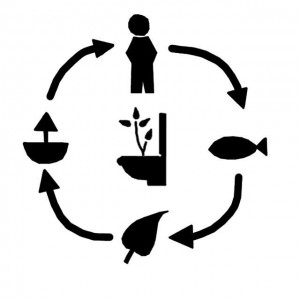Faecal contamination of drinking water presents one of the most acute threats to human health in Camps. As such, humanitarian interventions must ensure access to good quality sanitation through “a multi-step process in which human excreta and wastewater are managed from the point of generation to the point of use or ultimate disposal” (TILLEY ET AL 2014).
In Camps building of new sanitation facilities is required. To facilitate their establishment, The The Sphere Project Standards sets out Minimum Standards for sanitation, namely:
- SPHERE, Water, Sanitation, and Hygiene (WASH) Standard 1: WASH Programme Design and Implementation. WASH needs of the affected population are met and users are involved in the design, management and maintenance of the facilities where appropriate. The indicators for achieving this standard specify the required number of household per latrines.
- SPHERE, Excreta Disposal Standard 1: Environment free from human faeces. The living environment in general and specifically the habitat, food production areas, public centres and surroundings of drinking water sources are free from human faecal contamination.
- SPHERE, Excreta Disposal Standard 2: Appropriate and adequate toilet facilities. People have adequate, appropriate and acceptable toilet facilities, sufficiently close to their dwellings, to allow rapid, safe and secure access at all times, day and night.
- SPHERE, Drainage Standard 1: Drainage work. People have an environment in which health risks and other risks posed by water erosion and standing water, including storm water, floodwater, domestic wastewater and wastewater from medical facilities, are minimised.
Good quality sanitation requires planning mechanisms that facilitate source water protection and user engagement. Considering personal safety around the use of toilet facilities is essential, particularly when it comes to the safety of women and girls.
Since the build-up of Camps constitutes a last-resort and temporary means of ensuring the safety and wellbeing of refugees and Internally Displaced People (IDPs), management plans for excreta management need to address camp closing strategies from the beginning. At the same time, they must consider Emergency Preparedness and Contingency Planning for the case that the camp persists longer than six months and effectively turns into a Prolonged Encampments.
The section below presents a selection of sanitation systems and technologies appropriate for Camps. Although the selection was performed by a team of experts, practitioners should always consider the local environmental, technical, financial, social and economic framework conditions when selecting technologies. For the full range of available sanitation systems and technologies, please consult the Compendium of Sanitation Systems and Technologies.
Compendium of Sanitation Systems and Technologies. 2nd Revised Edition
This compendium gives a systematic overview on different sanitation systems and technologies and describes a wide range of available low-cost sanitation technologies.
TILLEY, E., ULRICH L., LÜTHI, C., REYMOND P. and ZURBRÜGG C. (2014): Compendium of Sanitation Systems and Technologies. 2nd Revised Edition. Duebendorf, Switzerland: Swiss Federal Institute of Aquatic Science and Technology (Eawag) URL [Accessed: 03.05.2023] PDFThe Sphere Handbook
This appendix of SPHERE handbook is a water supply and sanitation initial needs assessment checklist. This list of questions is primarily for use to assess needs, identify indigenous resources and describe local conditions. It does not include questions to determine external resources needed in addition to those immediately and locally available.
THE SPHERE PROJECT (2011): The Sphere Handbook. Rugby: Practical Action Publishing URL [Accessed: 19.10.2016]Compendium of Sanitation Systems and Technologies (Arabic)
This is the Arabic version of the Compendium of Sanitation Systems and Technologies. The Compendium gives a systematic overview on different sanitation systems and technologies and describes a wide range of available low-cost sanitation technologies.
TILLEY, E. ULRICH, L. LUETHI, C. REYMOND, P. SCHERTENLEIB, R. ZURBRUEGG, C. (2014): Compendium of Sanitation Systems and Technologies (Arabic). 2nd Revised Edition. Duebendorf, Switzerland: Swiss Federal Institute of Aquatic Science and Technology (Eawag) PDF

